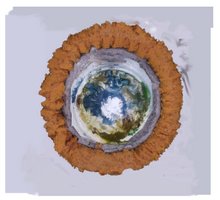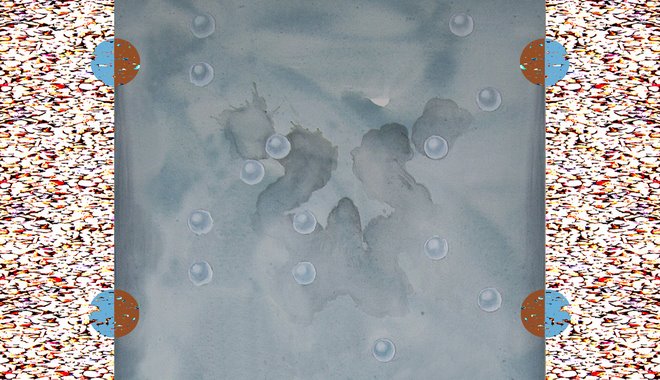In
this project, lines are generated based on existing roads (land
routes, and if necessary, ferry routes) within Europe.
Each line represents a path between 2 randomly selected cities, usually along major national/international highways; with the help of Google Maps, the most direct route between these 2 cities is determined. Each of the drawings posted below is a composite of 6 separate lines (6 separate routes); the routes are not individually numbered.
In order to make random selection by means of „dice numbers“ practical, 36 countries have been selected* (see list below) and listed in alphabetical order. From each country, 36 cities have been selected, and these are also represented as a separate list, in order of decreasing population.
To
further facilitate the selection process using dice numbers, the list
of 36 countries, as well as each list of 36 cities within each
country, is grouped into 6 subsets of 6 – broken down as follows:
subset
1 1-6
subset
2 7-12
subset
3 13-18
subset
4 19-24
subset
5 25-30
subset
6 31-36.
See a complete list of 36 countries at the end of this post.
See a complete list of 36 countries at the end of this post.
For each drawing, 2 multiple-choice tables have been set up; ‘Table A’ breaks down the 36 countries into 6 subsets of 6 countries, and ‘Table B’ breaks down the 36 cities within each country into 6 subsets of 6 cities. Within the selection process of each separate drawing, each country and city within its own subset is further randomly renumbered: in other words, assigned a separate number between 1-6. This was done in order to increase the „randomness factor“, and may or may not be stochastically legitimate,
but it makes me feel good to not have all lists „merely“ numbered
1 through 6.
In this manner, 4 dice numbers are sufficient enough to select a specific city. The first number
selects the Country-Subset 1-6, and the second number selects the
specific country 1-6 within that subset; the third number selects a
City-Subset, and the fourth number selects the specific city within
that subset.
The following is an example intended to illustrate this selection process (only in this example are the lists numbered 1 through 6!):
4
dice numbers are selected: 3 2 5 6.
3
= Country-Subset 3
2
=
second country within Country-Subset 3 = „country 14“ = Great Britain
5
= City-Subset 5
6
= sixth city within City-Subset 5 = „city 30“ = Portsmouth
In the section „table configuration“ in the text of each drawing, some numbers are marked in red, which denote those numbers which were not used for the intended purpose (and are therefore classified as „inert“). For example, when configuring a table with 6
options, 5 different
random numbers are needed, the sixth being automatically added by
default. If that doesn't make sense, look at a Table A or B in the
text of one of the drawings, you'll get it, trust me.
List of 36 countries
01
Albania
02
Austria
03
Belarus
04
Belgium
05
Bosnia + Herzegovina
06
Bulgaria
07
Croatia
08
Czech Republic
09
Denmark
10
Estonia
11
Finland
12
France
13
Germany
14
Great Britain
15
Greece
16
Hungary
17
Iceland
18
Ireland
19
Italy
20
Latvia
21
Lithuania
22
Luxembourg
23
Macedonia
24
Moldova
25
Netherlands
26
Norway
27
Poland
28
Portugal
29
Romania
30
Serbia
31
Slovakia
32
Slovenia
33
Spain
34
Sweden
35
Switzerland
36
Turkey
A series of six drawings may be viewed in the following six posts!
To
access all 36 lists of countries with their respective cities, please
go to www.tedgreen.net/dicepaintings.html and
click on the pdf-link „**“ at the the top of the page.
* A few words on the pre-selection of a 36-country range: Europe does not have universally accepted borders, when considered as a geographical continent nor as a political entity, so reducing it to a „container“ with exactly 36 countries was a doomed endeavor from the start, and I admit, the solution is by no means perfect. Some nations have been included which may not necessarily be considered to be „European“ in a historical sense (i.e, former Soviet republics), and nations have been excluded
which most if not all people would indeed consider to be European,
namely Montenegro and Cyprus. I apologize to any viewers who may feel
slighted. This is a virtual art project, and does not reflect any political, social or ethnical opinions whatsoever.
The easiest consideration for this project was “no midget nations”, so Andorra, Liechtenstein, Malta, San Marino and Vatican City were not
included. Working from west to east, it was simple at first, but it
got tricky behind the former Iron Curtain. As far as former Soviet
republics go, the 3 Baltic nations seemed to be a no-brainer, so then I added Belarus as
well, but for some reason balked at adding Ukraine. Russia is widely
considered to belong to Europe, but since it stretches all the way to
the Pacific, it's classified even more so as being a part of Asia, so
it's out. I had no problem including Turkey, but by then I had 35
countries. In retrospect, I should have added Montenegro, the only
former Yugoslav republic not included in the list; I admit, Cyprus
didn't even come into consideration. As it turned out, I added
Moldova, making 36, but like I mentioned above, the solution is not
perfect.



















